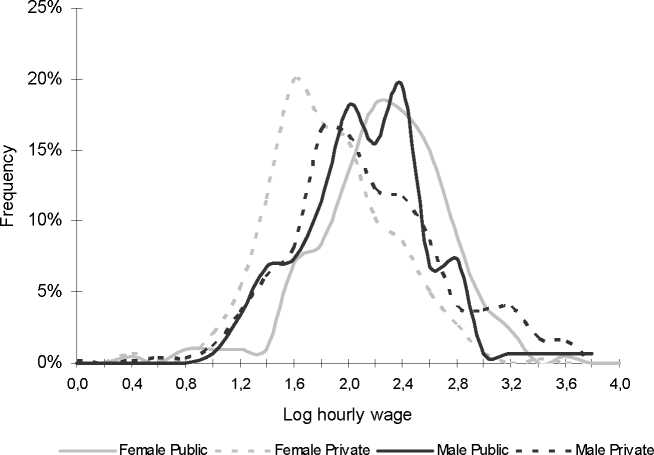300
Journal of Applied Economics
at the 1% level. Hence, on average, there is a substantial and significant pay gap
for both males and females. A Wilcoxon rank-sum test for the equality of the public
and private distribution is clearly rejected for both males and females.
Figure 1. Log hourly wages in the public and private sector by gender in 2000.

III. Econometric framework
The paramount aim of the paper is to estimate wages in the public and private
sector in order to study the causes of the unconditional earning differentials and
derive a structural switching equation that determines the sector choice. Hence,
in the following a switching regression model is adopted (Lee 1978) that estimates
separate wage equations for the public and private sectors. Let w1,i and w2,i be the
hourly wages in the public and private sector, respectively. Thus, the two log wage
equations to be estimated are:
ln w1,i = X1,i'β1 +ε1,i
(1)
More intriguing information
1. The Complexity Era in Economics2. Social Cohesion as a Real-life Phenomenon: Exploring the Validity of the Universalist and Particularist Perspectives
3. Placentophagia in Nonpregnant Nulliparous Mice: A Genetic Investigation1
4. Empirically Analyzing the Impacts of U.S. Export Credit Programs on U.S. Agricultural Export Competitiveness
5. The name is absent
6. Housing Market in Malaga: An Application of the Hedonic Methodology
7. INTERACTION EFFECTS OF PROMOTION, RESEARCH, AND PRICE SUPPORT PROGRAMS FOR U.S. COTTON
8. The name is absent
9. The name is absent
10. The name is absent